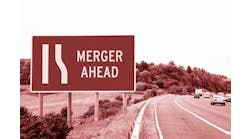In late 2013, Ford announced that it will produce an all-aluminum F-150 in the fourth quarter of 2014. Although Ford has used aluminum in body parts for its best-selling F-150 for years, the new aluminum body panels from the 2015 model will reduce the truck’s weight by 700 pounds from the 2014 model, improving fuel economy and allowing for a smaller displacement engine.
With more than 500,000 F-150s sold in 2013, many say the launch could signal a shift toward more mass-market commercial aluminum vehicles. In February, reports stated General Motors is eyeing a 2018 launch for an aluminum-bodied truck.
To maintain the number of aluminum-capable shops, Ford has created the Ford F-150 Collision Repair Program to offer training, equipment and tooling recommendations to properly repair aluminum.
Although the program is not mandatory, Elizabeth Weigandt, dealer communications manager at Ford, says that as aluminum components in mass-market vehicles become more common, becoming aluminum capable will be a business best practice. What’s more, taking the steps to become aluminum capable means avoiding unsafe repairs, which can happen if the proper setup and tools are not used.
Throughout 2014, Ford will promote the program with trade show displays incorporating staff specialists and a color-coded cutaway of the vehicle to demonstrate the repairs at several trade shows. Ford said it expects to help roughly 1,800 independents and dealers become aluminum capable by the time the 2015 F-150 hits dealerships later this year.
Weigandt recently spoke with FenderBender about the Ford F-150 Collision Repair Program and what shops need to know about the recognition process.
For shop owners, what is the impact of this launch? Is it another aluminum vehicle shops need to be ready for, or is it signaling a larger shift in vehicle manufacturing?
We took a lot of time to look at how to make this truck a real game changer. We knew that if we moved to high-strength aluminum, it would reduce weight but still maintain the strength of the vehicle. We took time to investigate how we could bring that about. We know our customers are always searching for the best possible product and in order to maintain this vehicle’s competitiveness, we decided to make the changes that we did for this model.
We can’t speak to how it will change the industry, but we do know that other automakers are getting interested in aluminum and it will only become more prevalent. Once the vehicle goes on sale, a collision shop could see this vehicle at any time.
Many shop owners are concerned about the high cost associated with becoming aluminum capable. Is that something Ford kept in mind during the construction of the vehicle?
This vehicle is an aluminum body on a high-strength steel frame. Ford has used aluminum in body parts for years, such as in the hood of the 1997-2014 F-150, but as we increased the amount of aluminum, we didn’t want to exponentially increase the cost for this truck. We wanted to keep costs in line with previous models and we think we’ve done that.
The body has panels that can be more easily removed so that other aspects of the vehicle can be fixed, which is also going to reduce costs for repair. For example, the apron tube in the front of the vehicle can be repaired without having to remove the dash. Whereas before, in the instance of a collision, the technician had to remove the whole instrument cluster. Now the side comes off and the apron tube can be removed easily.
Same thing happens with the floor pan. It can be sectioned without a complete replacement. The rocker panel can also be sectioned without requiring a complete replacement.
The B-pillar can also be accessed more easily. Before, the top of the pillar used to hook over and under the roof. Now it can be removed without having to remove the entire roof.
This launch has been touted as a game changer for the industry. How difficult will it be for shops to get ready to repair the new vehicle?
The Ford F-150 Collision Repair Program is the program that we’ve created to house all the services we’re going to offer to help dealers and independants become aluminum capable, which includes training, rebates, and a website on collision repair in general.
It’s not a certification program, so we’re not restricting the sale of parts to either dealers or independents. We recommend shops get training and that they buy the right tools and keep those tools separate so we don’t have galvanic corrosion between steel and aluminum, which can happen if repairs aren’t completed correctly.
We recommend that they do the work in order to become ready. After they are aluminum capable, they can be added to the Ford Body Shop Network, which is our body shop network of approved dealer and independent body shops. Our third-party administrator, Assured Performance Network, will go out to a shop and make sure they hit various criteria, meaning they have the correct training and tooling.
Ford’s “recognition” program for Ford dealership sponsored independent body shops will use Assured Performance Network requirements for general collision repair, with Ford-specific requirements added for aluminum repair capabilities to support collision repairs for the 2015 F-150.
If Assured Performance Network finds that the shop meets the necessary criteria, then they will be included as part of our network for consumers to use to find the body shops that are aluminum capable and that have met the Ford quality standards. There is a fee of roughly $2,000 paid to Assured Performance Network that is associated with becoming part of the network.
What tools and equipment are needed?
Some of the equipment and tools needed include:
- Dedicated aluminum MIG welding system that is 200v and equipped with pulse MIG technology
- Dedicated aluminum dent extraction system that must contain an aluminum stud welder, heat gun, pyrometer, aluminum hammers and dent extraction system
- Dedicated aluminum Wet Mix air filtration system that can be a portable or central installed system, and a specialized aluminum SPR rivet gun
- Small hand tool kit that contains all needed tools that is dedicated to aluminum repair.
- Work separation can be an aluminum separation (curtain) system or a separate room. Aluminum vehicles undergoing repairs must be able to be separated from vehicles undergoing steel repairs.
If you are a dealer, we recommend going through Rotunda, which is our supplier who we are offering a 20 percent rebate through. If you are not a dealer, we will provide equipment specifications, but we are not recommending a specific brand. Editor's note: According to a Ford document, current estimates for equipment needed to become aluminum capable are above $30,000.
- Report: Ford F-150 Insurance Rates Expected to Be High, Certified Repairer Numbers Low
- Ford to Discuss All-Aluminum F-150 Repair Procedures
- Reports: Aluminum Ford F-150 to Debut at Detroit Auto Show
How can shops begin the recognition process?
Independent shops need to be sponsored by any Ford dealer. It doesn’t have to be one specifically in their market, if they’re not used to working with that dealership. There is not a limit to how many shops a dealer can sponsor. Ford dealerships will begin to sponsor independent body shops immediately.
The training we are offering through the Ford F-150 Collision Repair Program is the new 2015 Ford F-150 Structural Repair Training course offered by I-CAR and I-CAR’S welding training and certification test. That training will start in June for independent shops. Shops can also get their tools and equipment any time over the next few months.
How does Ford plan to promote the program?
We’ll be at NORTHEAST Automotive Services Show, the Collision Industry Conference in April, Industry Week this summer in Detroit, and SEMA in November. At those events, we’ll have a comprehensive trade show display, incorporating staff specialists and a F-150 “body in white” designed to demonstrate how easily repairable our new truck is in the event of an accident.



